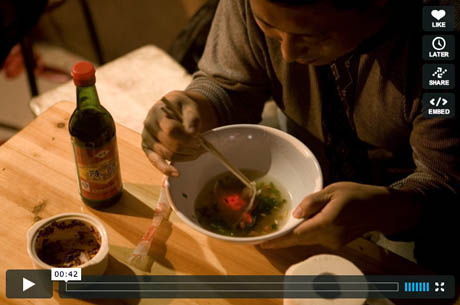Wednesday, November 23. 2011
Growing Objects – Programming Biological Systems
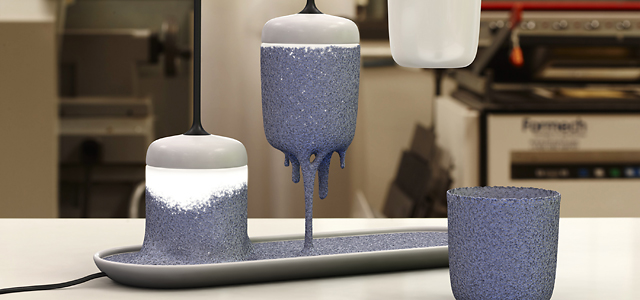
Whilst we are pretty much all aware of the implications of 3-D printing as a process of making any arbitrary object at the push of a button, it is exactly what living organisms have been up to since the invention of multicellular life.
Designers at IDEO have teamed up with scientists at the Lim Lab at the University of California, San Francisco to envision a “provocation” (that’s designer-ese for thought experiment) in which they explore the possibilities of exploiting known properties of microorganisms to literally “grow” the products we use every day.
What is particularly interesting about these future scenarios is where we once thought about computer systems that evolve through immense network of both physical and conceptual parameters, where one influence the other as in the case of Nervous System’s process of “growing objects”, the process of printing may eventually evolve into processes of actual physical growing. These two systems, of digital creation and of the biological one may eventually merge, creating an ecology of both digital and physical networks that communicate and feed of one another.
“One day if we understand how to program [living organisms,] we can encode things beyond software–we could encode materiality” says Carey. “That’s already happening in nature, but we have no idea how to do that ourselves.”
Time to move away from mimicry?
Read more on Fast Company >Training Bacteria To Grow Consumer Goods
More on this topic at syntheticaesthetics.org
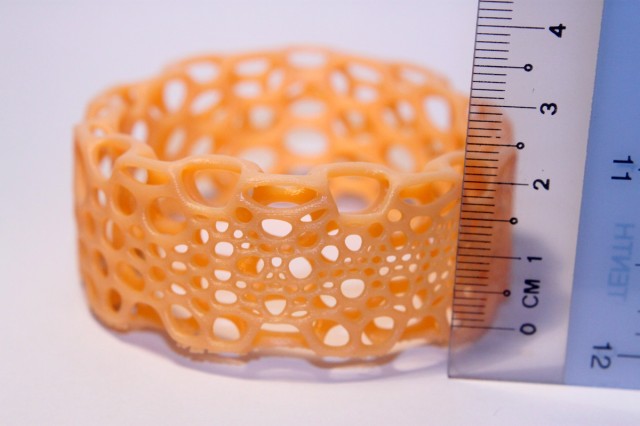
Tuesday, November 22. 2011
Philips's Microbial Home takes kitchen design back to the future
Via The Guardian via WMMNA
-----
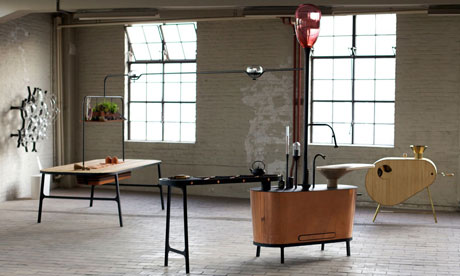
Going to waste … Philips is bringing methane back in the kitchen design for its new Microbial Home, which features a bio-digester (centre)
"(...)
But if Bulthaup is modernism taken to its logical extreme, what if everything modernism taught us about the kitchen is wrong? What if bacteria and manual labour are the future of the kitchen? Philips recently unveiled a concept kitchen as part of its Microbial Home system, in which the central component is a bio-digester kitchen island. The idea is simple: bacteria digests food and toilet waste and turns it into methane gas for cooking and lighting. It's a self-sustaining domestic ecosystem, and it presents an alternative vision to the clinical kitchen, inviting the microbes and the rotting vegetable peel back in.
(...)"
More about it on The Guardian.
Personal comment:
An interesting and funny article by Justin McGuirck about modernism, Orwell, Reyner Banham and... the kitchen!
Tuesday, October 11. 2011
Glitch Reality II [Objects]
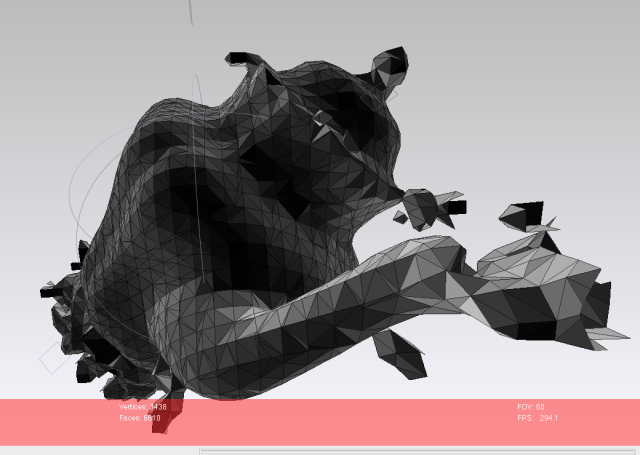
Following from Glitch Reality No1 commissioned by It’s Nice That for Nike, Glitch Reality 2 by Matthew Plummer-Fernandez and David Gardener is a new iteration of exploring physical objects in glitch form. The process is an interesting one, applying digital methodology to alter physical objects. Matthew Plummer-Fernandez explains:
A tea set was created by purchasing non-matching tea set components, scanning them with a Z-corporation 3D scanner and roughly repairing the digital mesh files. The mesh files are then 3D printed to create an instance of this tea-set data that inherits the glitches from the analogue-to-digital-to-analogue translation.
Also below is short animation experiment Matthew made using a crude 3D scan of his friends baby Harriet.
The meshing algorithm curiously created a caccoon from fragments of scanned baby pram, which inspired the title of the piece.
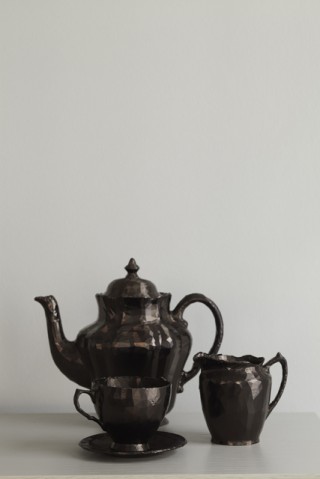
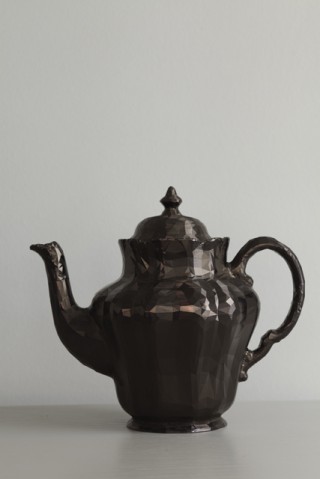
Continue reading.... Glitch Reality II [Objects]
Monday, June 27. 2011
Solar Sinter [Objects, Arduino]
-----
By Filip
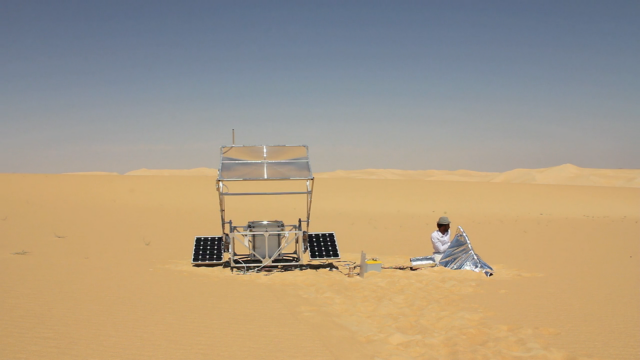
Amongst the wonderful collection of work currently on show at the Royal College of Art, in the corner on the first floor sits an installation/object by Markus Kayser called Solar Sinter. An MA Design Products student project, Solar Sinter is probably one of the most inspiring projects this year, aiming to raise questions about the future of manufacturing and triggers dreams of the full utilisation of the production potential of the world’s most efficient energy resource - the sun.
In a world increasingly concerned with questions of energy production and raw material shortages, this project explores the potential of desert manufacturing, where energy and material occur in abundance. In this experiment sunlight and sand are used as raw energy and material to produce glass objects using a 3D printing process, that combines natural energy and material with high-tech production technology.
In August 2010 Markus Kayser took his first solar machine – the Sun-Cutter (see video below) – to the Egyptian desert in a suitcase. This was a solar-powered, semi-automated low-tech laser cutter, that used the power of the sun to drive it and directly harnessed its rays through a glass ball lens to ‘laser’ cut 2D components using a cam-guided system. In the deserts of the world two elements dominate – sun and sand. The sun offers the energy and sand an unlimited supply of silica in the form of quartz. When silicia sand is heated to melting point, once cooled solidifies as glass. This process of converting a powdery substance via a heating process into a solid form is known as sintering and has in recent years become a central process in design prototyping known as 3D printing or SLS (selective laser sintering). By using the sun’s rays instead of a laser and sand instead of resins used in modern 3D printers, Markus had the basis of an entirely new solar-powered machine and production process for making glass objects that taps into the abundant supplies of sun and sand to be found in the deserts of the world.
The Solar-Sinter was completed in mid-May and later that month Markus took this experimental machine to the Sahara desert near Siwa, Egypt, for a two week testing period. The machine and the results shown here represent the initial significant steps towards what Markus envisages as a new solar-powered production tool of great potential.
The Solar-Sinster uses ReplicatorG software, an open source 3D printing program. For more information, see replicat.org.
The project is currently on show at the Royal College of Art graduate exhibition and I agree “a ‘must-see’ event for anyone interested in twenty-first century art and design”.
24 June to 3 July 2011.
Royal College of Art
Kensington Gore, London SW7 2EU
(Thanks to Steffen for pointing it out)
Related:
Known Unknowns [Processing, Objects] by @comkee + @ranzen at …
Dromolux [Processing, Objects] – Increasing cognitive performance …
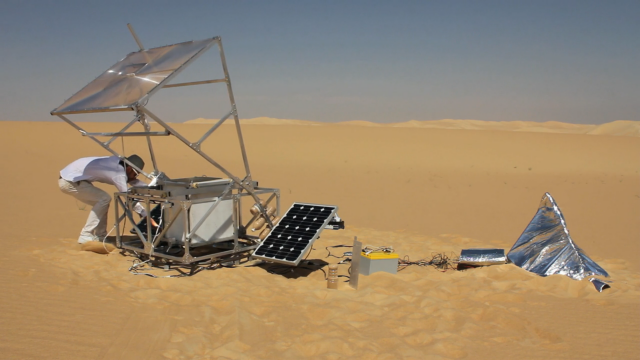




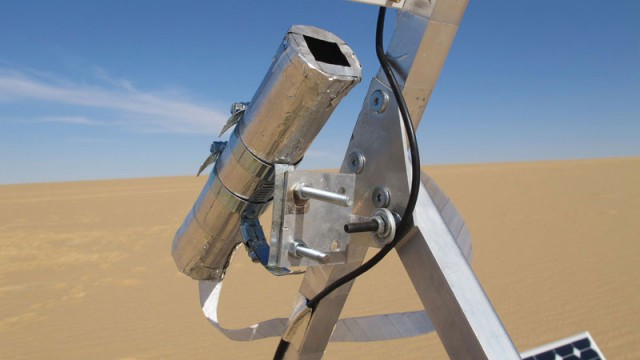
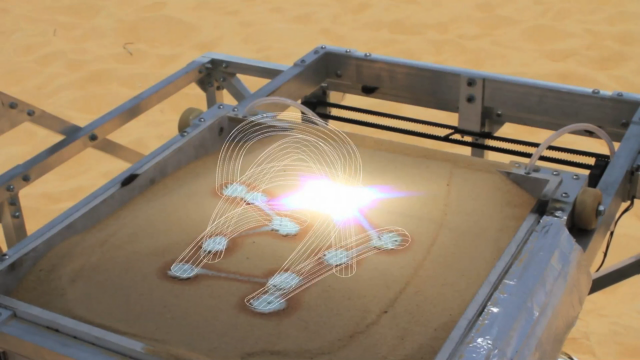
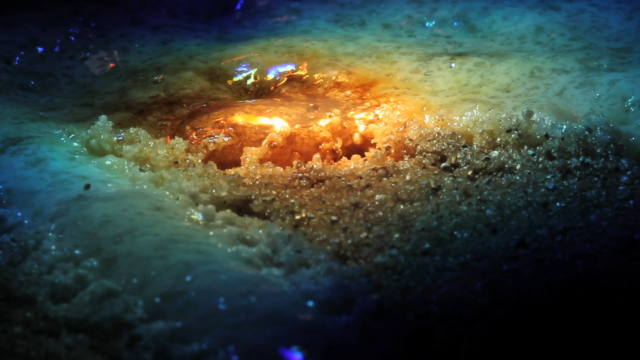
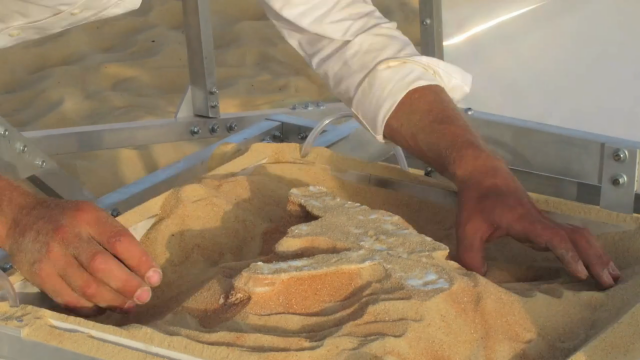
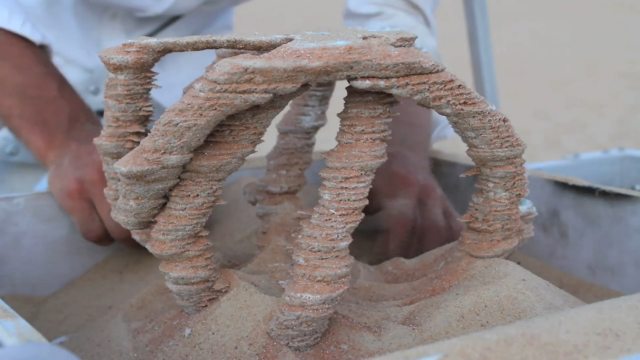

Tuesday, December 07. 2010
Decontextualized Formalism: Form+Code
Via Vague Terrain
-----
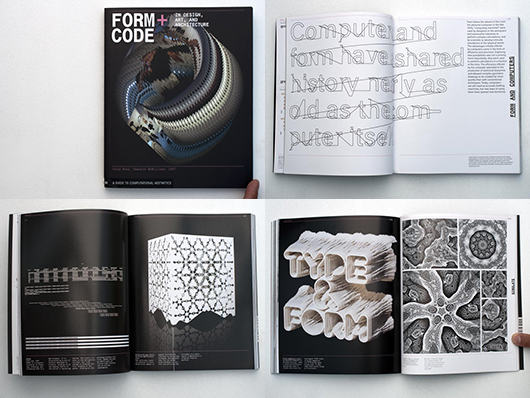
In creating a foundational piece of software infrastructure Ben Fry and Casey Reas have done myself and countless peers a great service and helped launch thousands of arty new-media applets. In Form+Code (F+C) Reas teams up with Chandler McWilliams and LUST design studio to produce a slim introductory text on procedural and code-influenced art and design. While the book makes only the briefest mention of Processing, a good percentage of the work documented in it can be traced directly or indirectly to the platform that emerged from the MIT Aesthetics and Computation work group. F+C also includes historical precedents, from loving documentation of green Cathode Ray Tube Spacewar!, to one of Sol LeWitt's wall drawing instruction cards (presented here as code only — LeWitt's typed out gallery proposal). There are a few other nods to post-minimalism and other pre-P5 projects. Additionally, F+C also breaks out of the screen-based ghetto, including images from proposed and built architectural investigations, art installations, design prototypes and sculptures.
The book itself is broken down into conceptual chapters that explore techniques that are code-like or only practically achievable with code-based tools: repetition, geometric transformation, parametrization, visualization, simulation. Each chapter includes spare descriptive pages which introduce overall themes and very briefly discuss the documented projects. F+C is a fairly no-nonesense machine -- it moves briskly through its functional structure of chapters, never pausing to dwell on any one project or image. Yoshi Sodeoka's 2004 video work based on presidential State of the Union addresses is presented in much the same way that Marius Watz's beautiful software generated abstractions are. Both sit alongside a Rafael Lozano-Hemmer installation, an elegant Cory Arcangle data-vis deconstruction, images of a Morphosis tower project for Paris, news-stream visualizations, and Mark Lombardi inspired diagramming. To some extent all these projects (and many others) are being stripped mined for the illustration of a technique or concept. This undifferentiated treatment of a really diverse set of work and ideas is, for me, the primary weakness of the book.
Even with some notable omissions in the projects covered, there's likely to be a items here most of us haven't seen yet – I discovered many. If you are looking for an overview and introduction, or a catalog of interesting work, Form+Code will be a useful resource. Ultimately, though, it leaves me hungry for a more focused and critical approach to this incredibly interesting subject. It's clear that Reas, McWilliams and LUST would be particularly well qualified to produce exactly that sort of text.
Personal comment:
The more and more code based / behavioral design, documented and commented here in this new book by Casey Reas et al.
Monday, December 06. 2010
Devices For Mindless Communication [Objects]
-----
(...)
Expressions Dispatcher

Many decisions made in our everyday lives are influenced by expert advice, from hairstyles to insurance policies. Yet, millions of decisions are made on a daily basis and instantly expressed through our own facial expressions without any preconceived external reassurance. We continuously strive to project a desired physical self image of ourselves, sometimes requiring most of our cognitive resources, and paradoxically, this daily challenge has a big impact on our lives. Expressions Dispatcher is designed to help people in their quest for expressiveness.
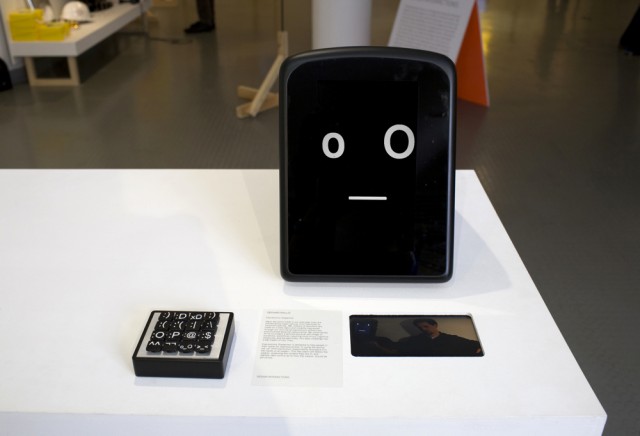
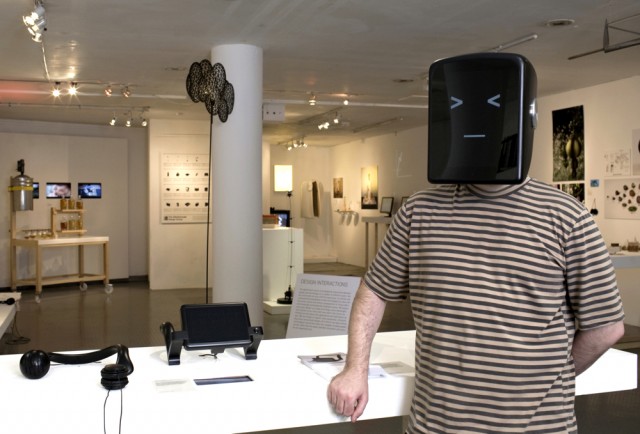
photos above by ha++
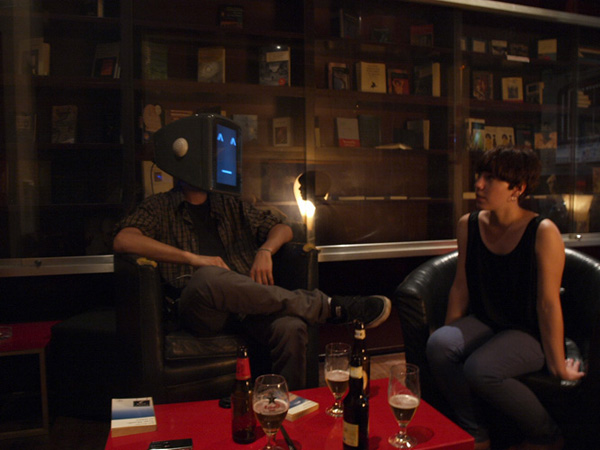
---
Full post with other "devices for mindless communication" here.
Related Links:
Tuesday, November 30. 2010
Microclimates objects
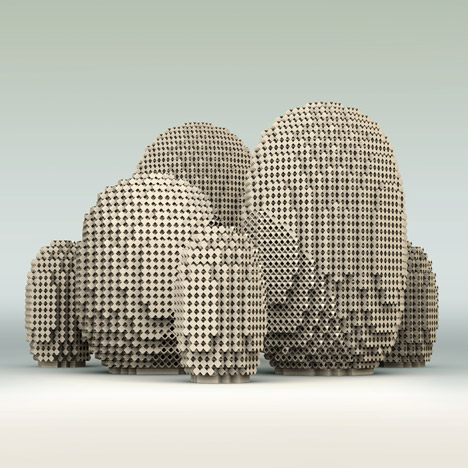
These conceptual cooling units by London designers PostlerFerguson would be made from 3D-printed sand.

Called Microclimates, the pods would be printed layer by layer on a large rapid-prototyping machine using locally sourced sand and a magnesium binging agent.

Water evaporating from the porous material would lower the temperature of the sand, in turn cooling the air as it flows through each pod.

A complex internal structure would create a large surface area for this heat exchange to take place efficiently.
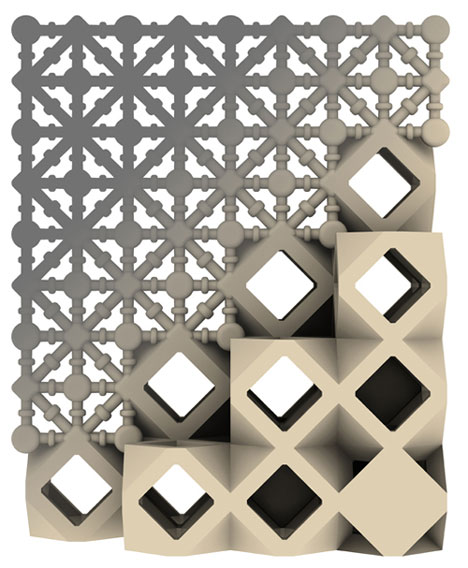
The project was designed for Dubai gallery and studio Traffic.

More about PostlerFerguson on Dezeen »
The information below is from the designers:
Microclimates/Postlerferguson 2010
What strikes us about Dubai is the energy and technological sophistication of the city that has arisen in the last few decades in one of the most ancient areas of human civilization. Dubai’s architecture is striking not only for its design, but also for the leaps in construction technology employed to realize it.
Our proposal draws on both the hypermodern, global city of today and the traditional building techniques that are ancient Dubai’s heritage. Microclimates is not just an installation, but a building language that can be reused again and again to create new public spaces. Traditional Islamic architecture dealt sustainably with the harsh desert climate by careful control of light and airflow through elements such as the masharabiya, wind towers, and earthen walls.
Microclimates are built up layer by layer out of locally sourced sand combined with a magnesium based binder. Using custom software, Microclimates is based on a three-dimensional interpretation of the masharabiya built from local sand by using a large scale rapid prototyping machine, with a complex internal structure whose large internal surface area efficiently conditions air passing through it by evaporative cooling.
Combining the principals behind these ancient building elements with the most advanced computer-aided manufacturing techniques, we are able to create new methods of construction that draw on the aesthetic and sustainable benefits of traditional buildings to realize a modern vision of what 21st century architecture in Dubai could achieve.
Personal comment:
Where natural conditioning based on vernacular principles meets rapid prototyping made of local materials...
Tuesday, October 05. 2010
SMS Soup
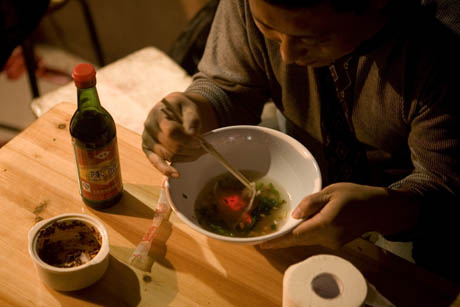
IMAGE: Street Life, a project by The Living (David Benjamin + Soo-in Yang) in association with the Living Architecture Lab at Columbia University Graduate School of Architecture, Planning and Preservation.
In his lecture at Sci-Arc last week, architect David Benjamin of The Living presented these wonderful soup bowls, which he and Soo-in Yang designed for the 2009 Shenzhen & Hong Kong Bi-city Biennale of Urbanism/Architecture.
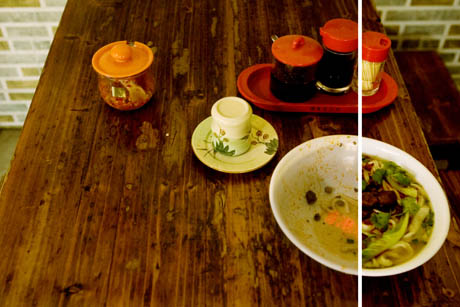
IMAGE: Street Life by The Living.
I’m a big fan of any food that talks to you, whether in the cryptic wisdom of fortune cookies or the logistics-laden transmissions of RFID-chip equipped milk cartons, but these bowls are especially clever. Benjamin explained that the basic idea was inspired by two defining features of South China’s cities: street food culture and the manufacture of electronics.
We designed and fabricated a custom soup bowl with scrolling LED messages hidden inside. We arranged for the curators of the Biennale to write short observations about the city and then program them into the bowls. And we arranged for several dai pai dongs around the city to serve food out of our custom bowls.
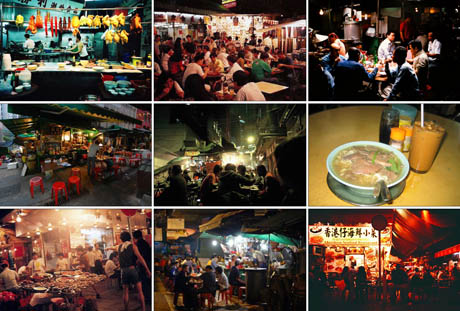
IMAGE: Dai pai dong in Shenzhen, via The Living.
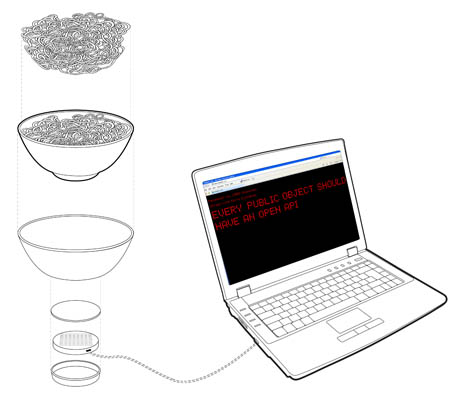
IMAGE: Street Life by The Living.
The dai pai dong, or open-air street restaurant, is all but synonymous with Hong Kong cuisine despite government attempts to dislodge them, while across the border in the electronics manufacturing hub of Shenzhen, thousands of assembly-line workers dine daily at dai pai dongs set up outside the factory gates.
In the biennale guidebook, curator Kayoko Ota describes The Living’s custom bowls in action:
Local citizens come to eat their favorite noodles in soup at a dai pai dong. Halfway into the bowl—surprise!—they discover an LED message glowing at the bottom, provoking thoughts about the architecture and urbanism of Shenzhen.

IMAGE: Electronics manufactured in Shenzhen, via The Living.
One of the ongoing goals of the three-year-old Shenzhen & Hong Kong Biennale is to bring the two cities closer together — last year’s organising committee rallied under the banner “Two Cities, One Theme, One Exhibition.”
Meanwhile, chief curator Ou Ning chose “City Mobilisation” as the theme for 2009, urging architects and urban planners to move away from their focus on “the building of physical space,” and instead pay attention to “the social structures, community interests and political realities behind these cities and buildings.”
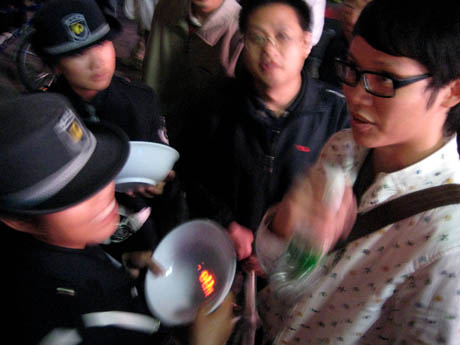
IMAGE: Street Life by The Living.

IMAGE: Sample messages from Street Life by The Living.
The Living’s soup bowls were a practical and playful means to achieve both goals, by inserting daily micro-messages from artists, architects, and curators in each city into the pre-existing social and cultural framework of open-air street restaurants. Hiding a glowing LED at the bottom of an ordinary soup bowl was an ingenious way to reference the local electronics industry — but, more importantly, according to Benjamin, it “made people stop, look, laugh, and hopefully think.”
IMAGE: Click here to watch this short video of The Living’s Street Life soup bowls in action.
This idea simply seems too good to limit to a two-month biennale.
Admittedly, in other contexts, the bowls would be stripped of their elegance as a reinvention of pre-existing local products — but still, the possibilities are endless! Anxious mothers could equip their university-bound offspring with an LED plate, sending text messages about the importance of a solid breakfast and vegetable consumption at appropriate times of day. Birthday meals could be served with a scrolling subtext of good wishes from long-distance friends and family. Farm-to-table restaurants could surprise guests with a greeting from the person who grew their dinner. Who knows, perhaps Israeli and Palestinian restaurants could even swap tableware to start a spontaneous, mobile-phone enabled dialogue between diners?
Personal comment:
I'm not so sure that the bottom of a soup bowl is the better location for statements about architecture... (while at the same time, it is true that this way of eating in Hong Kong is usually in conenction with a very dense and lively urban experience). Nonetheless, like Nicola Twilley I like the idea of reading while eating too. It's a common habit when one eats at noon, reading at the same time the newspaper or a magazine, sometime sms-es or while eating alone when travelling in a foreign country.
Tuesday, June 15. 2010
Solar Power Back in the Day
Clean, Limitless ... and Fun
Related Links:
Personal comment:
Charles (& Ray) Eames, them, again... True visioners and experimenters.
fabric | rblg
This blog is the survey website of fabric | ch - studio for architecture, interaction and research.
We curate and reblog articles, researches, writings, exhibitions and projects that we notice and find interesting during our everyday practice and readings.
Most articles concern the intertwined fields of architecture, territory, art, interaction design, thinking and science. From time to time, we also publish documentation about our own work and research, immersed among these related resources and inspirations.
This website is used by fabric | ch as archive, references and resources. It is shared with all those interested in the same topics as we are, in the hope that they will also find valuable references and content in it.
Quicksearch
Categories
Calendar
|
|
July '25 | |||||
| Mon | Tue | Wed | Thu | Fri | Sat | Sun |
| 1 | 2 | 3 | 4 | 5 | 6 | |
| 7 | 8 | 9 | 10 | 11 | 12 | 13 |
| 14 | 15 | 16 | 17 | 18 | 19 | 20 |
| 21 | 22 | 23 | 24 | 25 | 26 | 27 |
| 28 | 29 | 30 | 31 | |||
